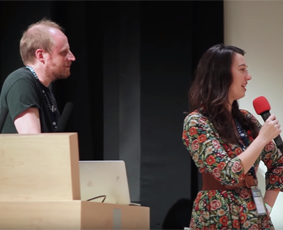Posts in this category are loosely related to thoughts, ideas, and methods from:
The Ludotronics Game Design Methodology: From First Ideas to Spectacular Pitches and Proposals
In Level Three of the Ludotronics’s Process phase, I make a distinction between monologue and dialogue and emphasize that most “dialogues” in games are actually monologues because dialogue is social—as a conversational exchange, a mutual exploration of observations, ideas, or intents, and, most importantly, a device to establish and maintain relationships between characters. (I also wrote a paper about it.) So the “dialogues” in your game are doomed to fall flat when the characters who talk to each other, including the player character, have no emotional bonds to speak of, or shared or opposing interests that connect them. Thus, if you want to write interesting dialogue, you need to have interesting characters and interesting relationships between these characters!
From there, because Ludotronics is not about game writing but about game design methodologies, the chapter proceeds toward sounding out the possible functions of speech and dialogue in games, not how to write them. The most helpful books among those that have been written on game writing are books that bring a solid understanding of screenwriting and a solid understanding of interactivity to the table. Without the former, you won’t be able to write engaging dialogue that establishes or maintains relationships, pushes the story or the character development forward, and is not poor; without the latter, you won’t be able to provide your player autonomy, agency, or both.
Now, there was a great presentation by Jon Ingold at last year’s AdventureX that accomplishes both, assisted by actor and voice artist Sally Beaumont (who also had her own terrific presentation at AdvX on Directing Voice Actors). You may or may not agree with specific dialogue decisions but that’s not the point, as Ingold himself stresses often enough throughout, and in hilariously self-deprecating ways. The point is how to plan, prepare, and execute dialogue that is both interesting and interactive.
If you’re a game writer, you should watch this immediately, and maybe not just once. You will find terrific tools, e.g., how to speed up dialogue (trapdoors) or slow down dialogue (loops); the principle of accept, reject, and deflect; or why the correct number of dialogue choices for the player is three, except when it isn’t! Also, it’s fun. Watch and enjoy!
AdvX 2018: Jon Ingold | Sparkling Dialogue: A Masterclass
If you have something valuable to add or some interesting point to discuss, I’ll be looking forward to meeting you at Mastodon!

